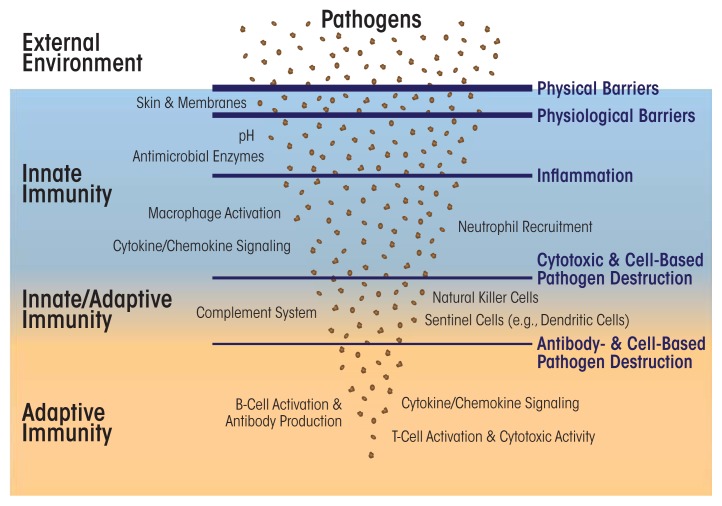Figure.
Overview of the immune system. Innate immunity encompasses several non-specific protective mechanisms against infection, including physical and physiological barriers, cells (e.g., macrophages and neutrophils) that detect and attack other cells carrying pathogen-associated molecular patterns, and small proteins that signal pathogen invasion (i.e., cytokines and chemokines) or short peptides that directly attach to and restrict microbial pathogens. The adaptive immune system comprises specialized cells (e.g., B and T cells) and proteins (i.e., antibodies) that detect and eliminate specific pathogens and also uses cytokine/chemokine signaling to recruit additional immune cells. Several cells in adaptive immunity (i.e., memory B and T cells) can store immune memory of a pathogenic invasion. The complement system, along with natural killer cells and dendritic cells, straddles both innate and adaptive immunity.

